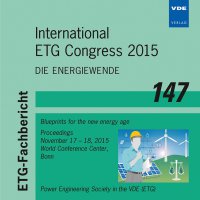Operating a Multitasking Stationary Battery Storage System for Providing Secondary Control Reserve on Low-Voltage Level
Konferenz: International ETG Congress 2015 - Die Energiewende - Blueprints for the new energy age
17.11.2015 - 18.11.2015 in Bonn, Germany
Tagungsband: International ETG Congress 2015
Seiten: 8Sprache: EnglischTyp: PDF
Persönliche VDE-Mitglieder erhalten auf diesen Artikel 10% Rabatt
Autoren:
Zeh, Alexander; Mueller, Marcus; Hesse, Holger C.; Jossen, Andreas; Witzmann, Rolf (Institute for Electrical Energy Storage Technology, Technische Universität München, Munich, Germany)
Inhalt:
The current debate about the application of storage systems at scientific conferences and symposiums shows the strongly increasing relevance of battery storage systems for a successful completion of the energy transition in Germany and the entire world. Grid operators may be able to substitute grid reinforcement otherwise necessary, electricity utilities can open up new business models and energy customers may become more independent from grid electricity tariffs by using storage systems. However, high investment costs of turnkey storage systems designed for a single storage application do not allow economic operation at present. It is therefore highly desirable to increase cost-effectiveness of storage capacity by combining multiple use-cases. In this paper, a multitasking application for a large-scale stationary battery storage system is presented which allows relieving the grid, storing photovoltaic surplus energy and providing control reserve. An algorithm is presented which allows operation for secondary control reserve on a low-voltage level. Furthermore, the economic benefit of this use-case is calculated for different scenarios. Results show, that providing secondary control reserve and temporary storage for solar systems is a feasible solution to use spare storage capacity especially during night time.


